Problem...
I'm fed up with you, "Sony".
In this personal blog, I have two posts where I mention that even though I would rather not buy new consoles from "Sony", I still love their controllers and use them for all the platforms I play on.
one
two
This time has come to an end.
In times when almost all typical problems have solutions, corporations are used to bring back old ones, normalize them in the media, and then desperately fight against with users money. The process of normalizing has absurd part in it by taking users for complete idiots and with poker-face pretending that the issue has always existed, and the user simply did not notice it before.
Yes, I'm talking about stick drift. Regular analog sticks are basically two potentiometers placed on both axis. Any potentiometer consists of a contact surface with a conductive coating and a movable element that slides on this surface. Over time, due to the constant friction between the two parts, the conductive coating wears out, so an error appears in the analog signal which is incorrectly converting into a digital signal. Therefore, sudden movements occur, becomes more difficult to aim, and so on.
This problem appeared in the media with the "Nintendo Switch" scandal. Sometimes it took like a few weeks for a brand new "Joy-Con" to become unusable due to the issue mentioned above. There were public announcements, there were lawsuits to consumer court. Time passed, the scandal calmed down, but the issue remained. In addition, the issue itself started to be mentioned not as something extraordinary, but as something normal... and not only in relation to "Nintendo", but also to other companies who produce controllers. "Sony" was no exception.
So why nobody talk about this issue before? Why, even now, you can launch an old console with the original controller, and it will feel the same as it did many years ago?
The quality of modern analog sticks, or rather the potentiometers used inside, is getting worse and worse. Sometimes conductive contacting over contact surface is so thin that it rubs off after a few hours of active use. And sometimes this coating looks as if it is made of solid rusty dust. Why so? Well, you can guess.
No software error correction used anymore. The moment when the analog signal is converted into a digital one is ideal for correcting abnormal deviations in the signal at the software level. Such an algorithm was implemented in "DualShock 2" controllers a long time ago. You can say that the controller healed and calibrated itself. But now such things are not taking place.
Sometimes, instead of potentiometers, Hall sensors could be used. In them, the contact surface is replaced by an electromagnetic sensor, and the movable element has a magnet in it. Therefore, there is no physical contact between the parts. As the result, there is no friction. And as the result, there is no wearing out. You will be surprised, but Hall sensors were used in almost all "DualShock 3" from the first "PlayStation 3" bundles. This is probably the answer why it was so easy for me to play shooters on the "PlayStation 3".
As you can see, Hall sensors look like the most interesting and modern solution to the problem. And at the time when Hall sensors began to poke literally into every switch of mechanical keyboards, in controllers it remains an exotic solution. Why so? You can guess again.
Not so long ago, "Sony" announced its elite modification of "DualSense" called "DualSense Edge". Its main feature was the possibility of analog stick modules replacement. At about the same time, the company called "GuliKit" announced that in addition to Hall effect upgrading kits, they will begin to produce analog stick modules upgraded with Hall effect sensors out of the box specially for "DualSense Edge". Time passed. I bought a "DualSense Edge" and was eagerly awaiting the possibility of this cool upgrade. Finally, there was a statement that the upgrade kits will be available soon, but only for the standard "DualSense". For the so-called elite version, "Sony" did not provide access to calibration software.
I was frustrated, but I still had an idea to just buy two analog stick modules and experiment with regular "DualSense" Hall effect upgrading kits. But the trick is there are no replacement analog stick modules on the market anymore. Why? You can guess again.
And that's it. This is the last straw, "Sony". I am searching for alternatives. And in this article I am going to show some cool findings.
8BitDo Pro 2 Bluetooth
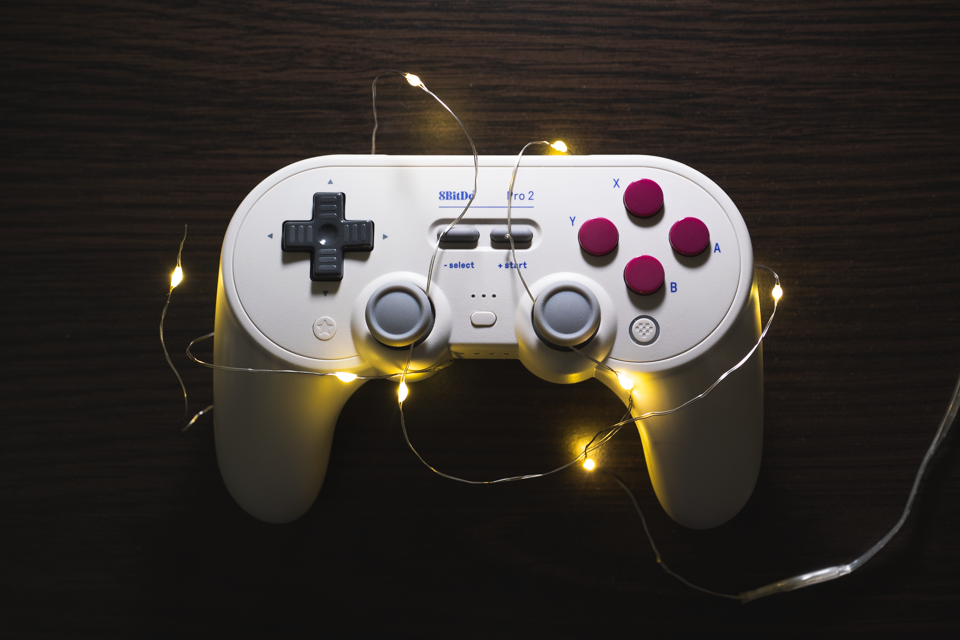
8BitDo company specialized on the retro controllers and adapting of retro experience for modern needs. They have a massive range of products. I owe "8BitDo Wireless USB Adapter" in both versions for a long time and this is how I used my "Sony" controllers with "Nintendo Switch". Cool solution, to be honest.
But let's get back to "8BitDo Pro 2 Bluetooth" controller. Maybe because I have a huge background experience with "Sony" controllers, but I really do not like the more widespread asymmetrical controller design. For me, it is pretty uncomfortable to have analog sticks on the different levels. This is one of the main reasons why I preferred "Pro 2 Bluetooth" among other variants available from the "8BitDo".
Design:
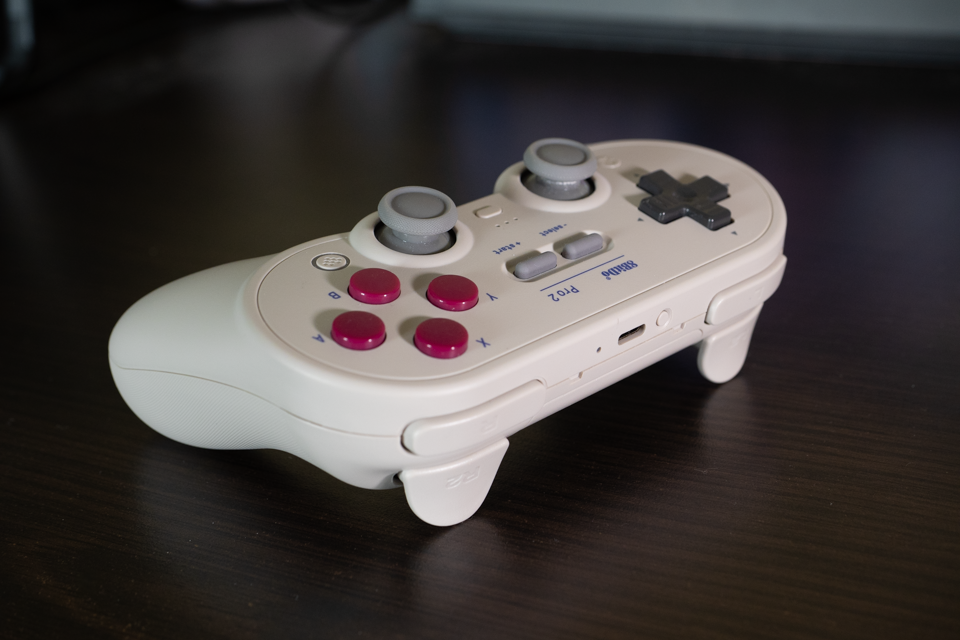
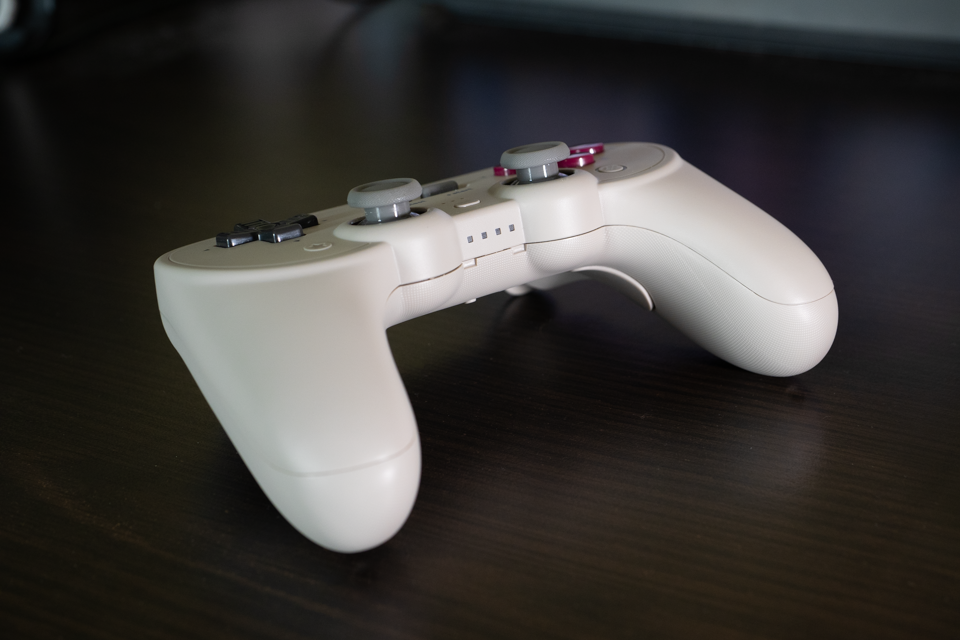
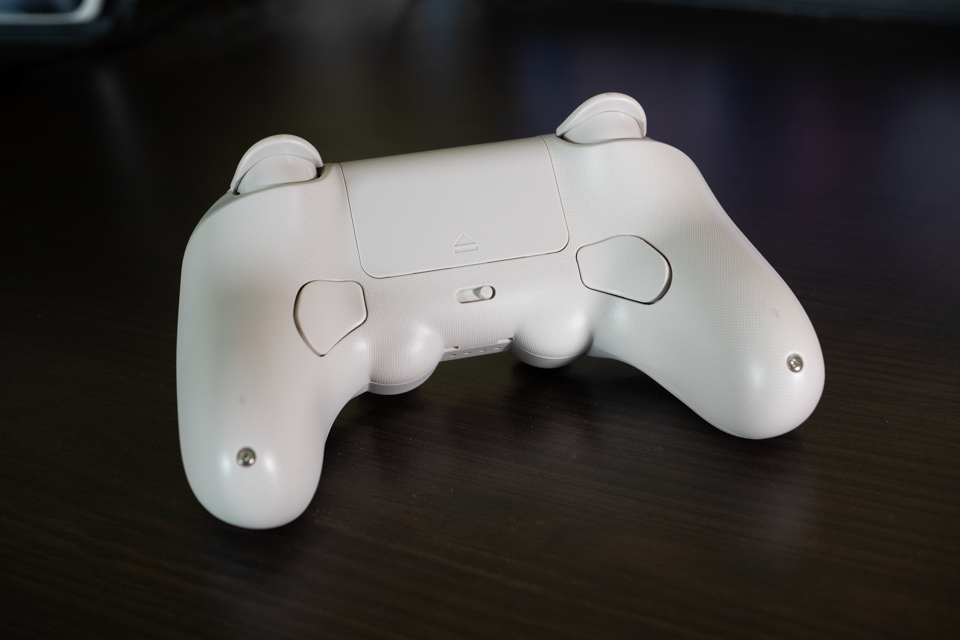
"Pro 2 Bluetooth" controller takes the best from plenty of other designs. Flat top side and slim body along with long "L", "R" buttons from classic "SNES" controllers merged with banana grips from "DualShock 4" and rounded long travel triggers from "DualSense". It is extremely comfortable to hold.
The overall layout has a symmetrical design, so both analog sticks positioned on the same line. The sticks itself are rubberized and has shape like in "Switch Pro" controller but with microscopic grip texture like in the latest "Xbox series" controllers.
All front buttons have the same design and feel with classic "SNES" controllers.
D-pad due to single peace design allows to quickly slide over it with finger to change direction, but it is still giving a pronounced sense of direction so it is almost impossible to missclick.
Unlike the original SNES controllers, "Start" and "Select" buttons are aligned on the same line.
Furthermore, there are two additional pedals for macros that implemented seamless with the shape of banana grips and located right under the middle finger.
For this moment, there are 6 colors for this particular model: 3 regular and 3 transparent. I prefer "G-classic" for beautiful retro combination of colors. Also, only "G-classic" color variant has a bit different D-pad design.
Functionality:
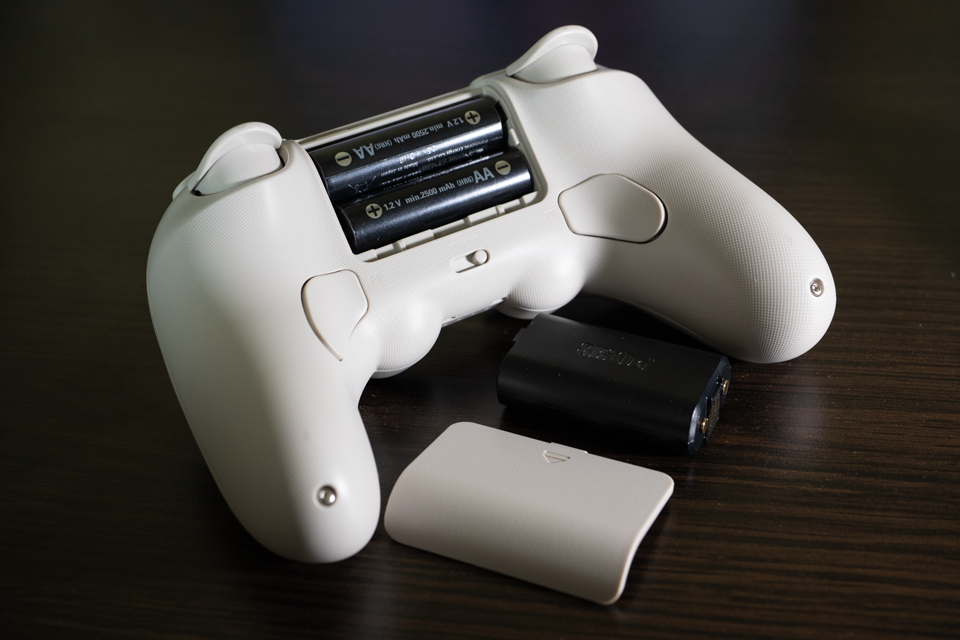
I can honestly say that this controller is the most compatible on the market. It has 4 modes, you can easily change with physical switch on the back.
S - Switch mode. Recognized as "Switch Pro" controller.
A - Apple mode. Recognized as "Dualshock 4" controller.
D - D-input. Generic controller. For "Android" devices.
X - X-input. Recognized as "Xbox One S" controller.
Considering that it has dedicated mode for "MacOS", it still possible to use X-input mode via "Bluetooth".
Wired mode for sure feels with less lag. According to the tests across related topics, lag is about 15ms in wired mode.
There are dedicated battery compartment with rechargeable battery pack inside. But if you like, you can easily use two AA disposable batteries or AA rechargeable accumulators.
All buttons implemented with usage of membranes. But the membranes are high quality and give springy feel with pronounced feedback.
Recently, "8BitDo" started transferring all their top-tear products to analog sticks based on Hall effect sensors. Currently, both of the variants based on high quality "ALPS" potentiometers and Hall effect sensors are available. However, I highly recommend trying the modern Hall effect sensors version. It gives much more precision and consistency. Also, it is almost free from stick drift problems, so you can achieve the whole range of analog signal input without afraid of getting side effects such as side overshooting or center positioning error.
Also, there is so-called "Turbo mode" but I really do not know who can critically need it so... just good to have it.
Software:
"8BitDo" has their ecosystem with so-called "Ultimate Software". It is available even on "Android" so you can map your macros, adjust dead zones etc. almost everywhere. "8BitDo Pro 2 Bluetooth" has possibility to remember up to 3 profiles and switch between them on the go.
Conclusion:
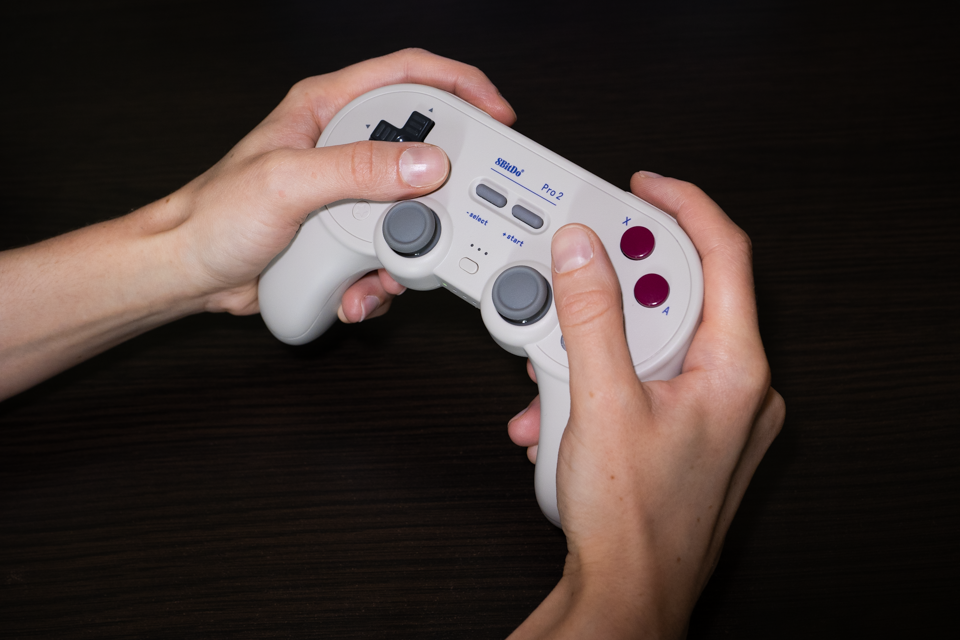
As you can see, "8BitDo Pro 2 Bluetooth" is a solid solution with multiple modes that allows to use it on every open platform. It is extremely comfortable and essential in every sense.
However, without 2.4GHz 1000Hz polling rate it is still in the shadow.
To be honest, "8BitDo" needs to think about making "Pro" and "Ultimate" controller at the same price point: both with 1000Hz polling rate but with only difference in layout design. I am not ready to trade the comfort of "Pro 2" for less lag and let's be honest - asymmetrical "Xbox" like designs are boring.
That is it for today. Maybe the next controller will be some fancy one.
Created by TennojiM
All rights reserved
© 2025
All rights reserved
© 2025
